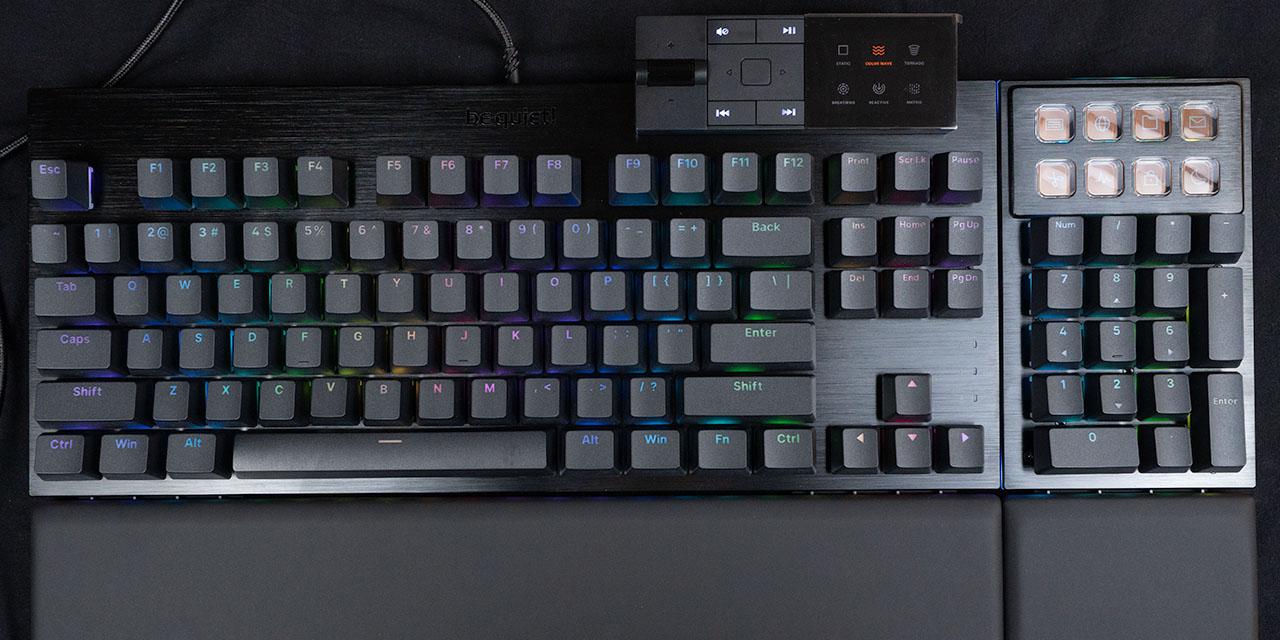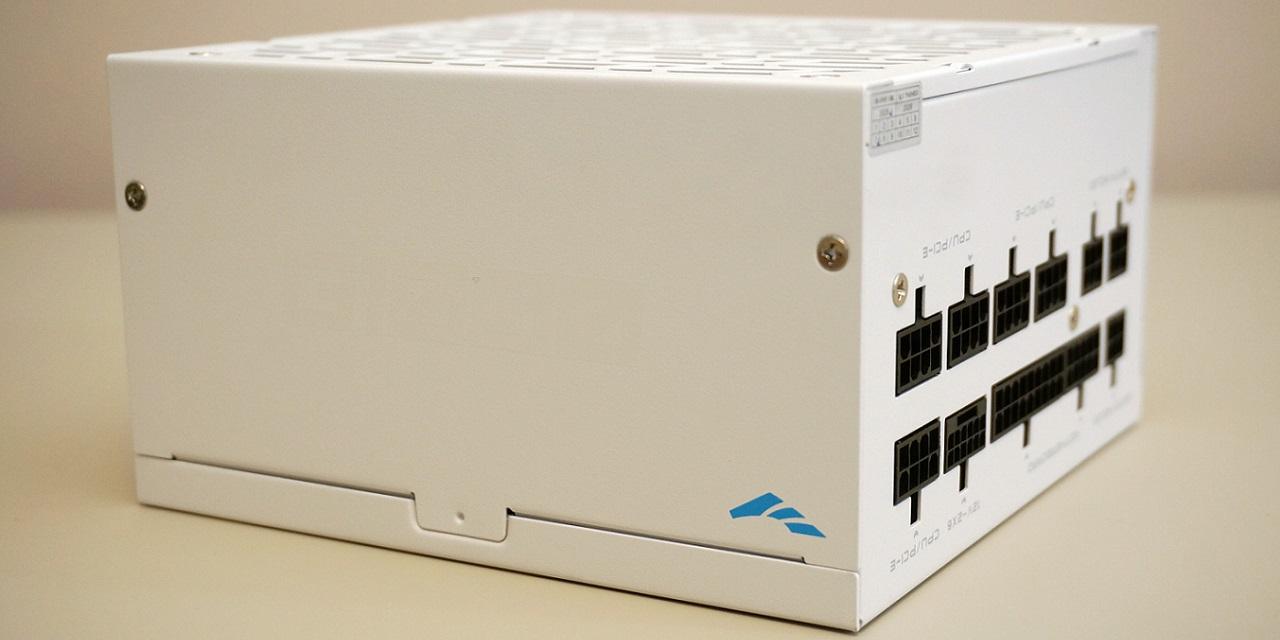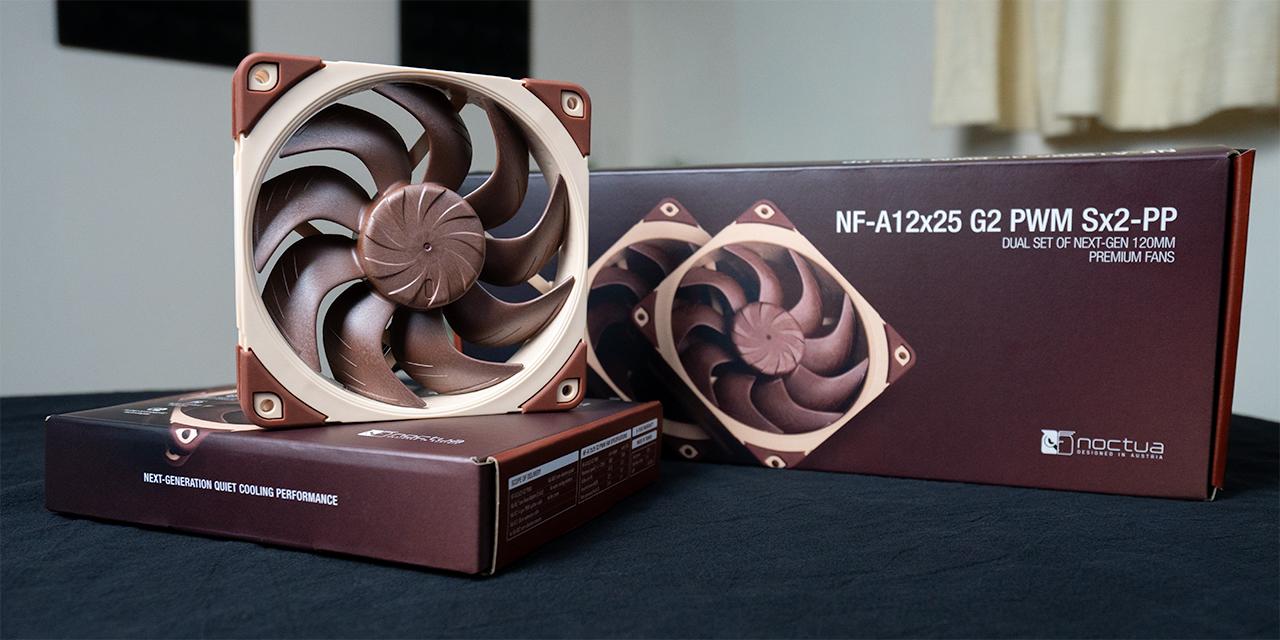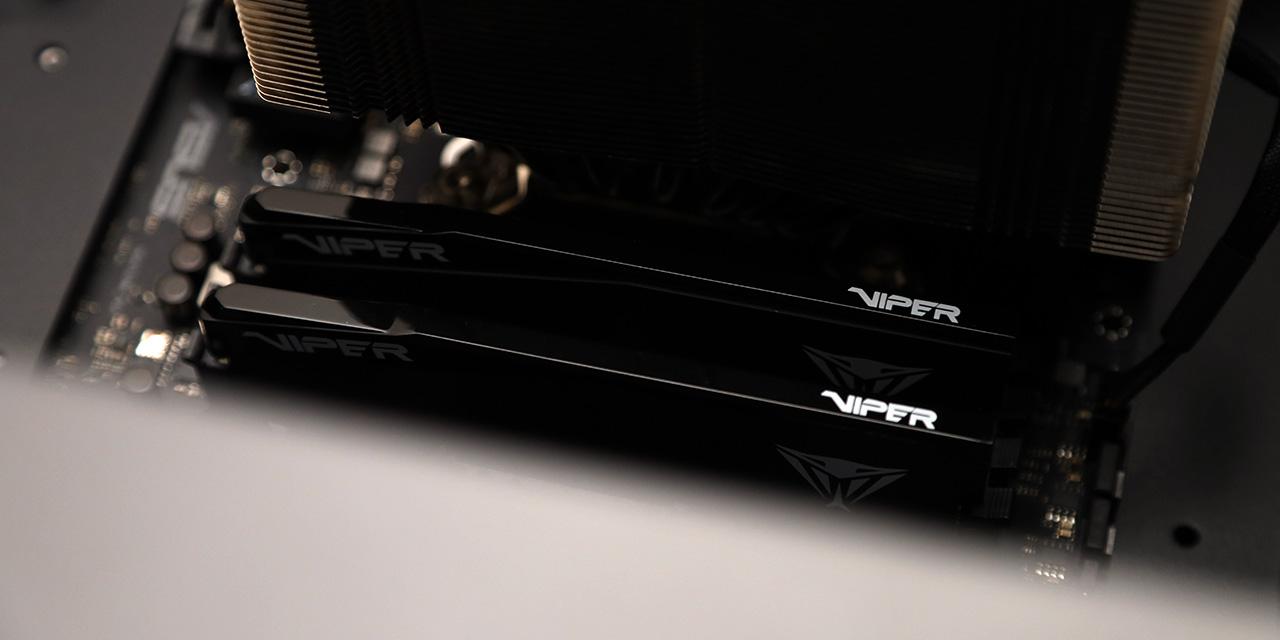Page 2 - A Closer Look, Test System

The Patriot Viper Elite 5 DDR5-6400 2x16GB kit quickly catches my eye with the glossy white finish on both sides of the heatsink. We have seen our fair share of white memory modules, including the Crucial Pro Overclocking White and XPG Lancer RGB among others, but they all use this color differently. In the case of the Viper Elite 5, we have a mostly white finish with black accents around. A black plastic trim is at the top, along with the Viper logo on both sides. Patriot's Viper name is also on the plastic trim on the sides and the top. The heatspreader design of the Patriot Viper Elite 5 is a mirror image between the two sides of the module, but clearly asymmetrical when you look at only one side.
As you can infer, the heatspreader is aluminum, which is a lightweight and decent heat conductor that should work in preventing any hot spots. The added height from the heatspreader results in an increased centimeter of height compared to a bare memory module. This is especially important for systems equipped with side-mounted CPU heatsink fans near the memory slots, as it can use the generated airflow. The medium height will not interfere with your processor cooler. Nowadays, only OEM-grade memory seems to lack a heatspreader altogether. While the additional aluminum on the sides may not directly impact performance, they still serve a function of dissipating heat with the bonus of enhancing the aesthetic appeal. Otherwise, on one side of the module, there is a specifications label. It shows the model number, operating transfer rates, voltage, and certification labels. It is not on the label, but this kit came from Taiwan.

The two aluminum sides stay together with strips of thermal conductive adhesive over the chips, as well as tape over the plastic framing piece at the top. This adhesion force between the heatspreaders and memory ICs is quite strong, but with some heat, both sides can be pried off. It is unlikely you will ever need to remove the heatspreaders unless you are working with exceptionally low clearances in your system. In this case, it is better to just buy OEM-grade memory instead. As mentioned previously, the aluminum heatspreaders are mirror images of each other and they feel solid in the hand.
On the black PCB itself, there is a power management integrated circuit, or PMIC, positioned in the middle of the module. A light blue thermal pad resides over the PMIC area to provide contact with the heatsink and aid in dissipating heat. According to our investigations, this is Renesas PMIC.

A closer look at one of the memory chips on the Patriot Viper Elite 5 DDR5-6400 2x16GB dual channel memory kit. The photo above shows two different chips, with one having the marking of DTAGD285W9 and the other DTAGD394WE. There is a total of sixteen of these chips on each module, with eight on each side. What is interesting is that many of these have different labels, and I found a total of fourteen different markings. I am not sure why they all have different printing marks on each one, but they all seem to be re-labeled SK hynix chips, with sixteen 1GB chips for a total of 16GB on each DIMM. As mentioned on the previous page, these RAM modules run at a transfer rate of DDR5-6400 with 32-40-40-84 latencies. This operates at a DDR5 voltage of 1.4V, which is higher than the base DDR5 voltage of 1.1V.

Our test configuration is as follows:
CPU: AMD Ryzen 7 9700X
CPU Cooling: be quiet! Dark Rock Elite
Motherboard: ASUS ProArt X870E-Creator WiFi
Graphics: EVGA GeForce RTX 3070 Ti XC3 ULTRA GAMING
Chassis: Endorfy Arx 700 ARGB
Storage: Lexar Professional NM800 PRO 2TB, Kingston NV3 2TB
Power: be quiet! Straight Power 12 1200W
Operating System: Microsoft Windows 11 Pro (24H2)
Compared Hardware:
- Patriot Viper Elite 5 DDR5-6400 2x16GB @ DDR5-6400 32-40-40-84
- Crucial Pro Overclocking DDR5-6400 2x16GB @ DDR5-6400 38-40-40-84
- Lexar ARES RGB DDR5-6000 2x16GB @ DDR5-6000 34-38-38-76
- Patriot Viper Venom RGB DDR5-7000 2x16GB @ DDR5-7000 32-48-48-96
One thing we should note is that we are evaluating with an AM5 system, which means there is an optimal operating ratio between the frequency of your memory, memory controller, and the Infinity Fabric. Officially, AMD recommends memory operating at 6000MT/s.
Page Index
1. Introduction, Packaging, Specifications
2. A Closer Look, Test System
3. Benchmark: AIDA64 CPU
4. Benchmark: AIDA64 FPU
5. Benchmark: AIDA64 Memory
6. Benchmark: PCMark 10
7. Benchmark: 3DMark
8. Benchmark: PassMark PerformanceTest 11
9. Benchmark: SuperPI 1M, Cinebench 2024
10. Overclocking and Conclusion





